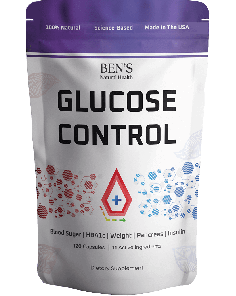For many years the medical community has viewed high levels of circulating testosterone as the “smoking gun” that causes prostate disease, particularly prostate cancer.
Many experts believe that this simplistic approach is ignoring a growing tide of evidence that points to the contrary. 1 2
Today, Testosterone Replacement Therapy (TRT) has become the norm for treating men with confirmed low levels of circulating testosterone or low-T.
Media ads abound touting the benefits of TRT. Unfortunately, they pay little regard to the actual need for it.
Thus, men often are led to believe that many of their aging problems are due to a testosterone deficiency and can be solved by a prescription for TRT.
While replacing testosterone is quite valuable for quieting some of the annoying symptoms in men with a confirmed deficiency (hypogonadism), it has little effect on a man whose levels are normal, and can even be dangerous.
Symptoms of Low Testosterone
- The first noticeable signs and symptoms a man might encounter of low testosterone is a reduction or disappearance of spontaneous erections in the early morning hours (nocturnal erections).
- The second is a reduction of normal libido (sexual drive). This reduction in libido is often one of the principal driving factors leading a man to seek medical help. The other is persistent erectile dysfunction. Both tend to send men to a medical professional requesting testosterone replacement.
- Missing or degraded nocturnal erections are typically the first to appear and are often ignored by many men. Other symptoms, such as those on the list below, may also be present.
Nocturnal erections are a normal part of the male body. A young man may experience several in a single sleep session. They are, essentially, a part of the male body′s normal testing and maintenance system.
By activating the erectile mechanism automatically, without any need for sexual arousal, they both test and tone the system.
With aging and decreased testosterone levels, nocturnal erections tend to deteriorate, but most older men with normal testosterone levels continue to experience them. They tend to become non-existent in older men with low testosterone levels.
Other symptoms include:
- Reduced muscle mass
- Lowered energy levels
- Changes in orgasmic sensation especially delayed or missing orgasms
- Night sweating or hot flashes
- Decrease in semen volume sperm count
- Mood changes particularly increased tendency towards depression
- Increased potential to develop anemia
Erectile Dysfunction
Contrary to what the wealth of “Low-T” ads would have a man believe, low testosterone is not the primary cause of erectile dysfunction.
While a deficiency of testosterone certainly has a limiting effect on erections, it is not the primary cause.
A 2016 review of studies of men with erection difficulties concluded that TRT is not an effective treatment for erectile dysfunction. About half of the men studied showed little to improvement in erectile function with testosterone treatment. 3
A man suffering from persistent erectile failure should have a complete physical examination to rule out other causes of the problem, especially cardiac function and/or vascular problems.
Persistent erectile dysfunction is often the first symptom of cardiac or venous insufficiency.
Many health conditions contribute to vascular problems, and anyone of them can cause or exacerbate erectile dysfunction.
For many years, impotence was thought to be a side effect or complication of conditions like diabetes, cardiovascular disease, high blood pressure, high cholesterol, high triglyceride levels or low levels of testosterone
However, it is more likely that it is the earliest indicator of impaired circulation from an underlying condition. Thus, by resolving problems with erectile dysfunction – early and naturally, – one may also be preventing or ameliorating other cardiovascular problems. 4
Causes of Low Testosterone
Low testosterone is typically caused by underlying health problems, including:
- Poor diet
- Obesity
- Smoking
- Excessive alcohol consumption
- High cholesterol
- Poor circulation
- Heart disease
- High blood pressure
- Cardio-Vascular disease
- Depression
- Excessive stress and anxiety
All of the above conditions can contribute to a process called aromatization in the body. This process, mediated by the action of the aromatase enzyme, converts testosterone to estrogen. High levels of the aromatase enzyme result in elevated levels of estradiol and lowered testosterone levels.
The research appears to indicate that an increase in conversion of testosterone to estradiol, rather than the overall testosterone level, is a primary factor that causes testosterone deficiency and is caused by many of the conditions listed above.
Measuring Testosterone Levels
The common way to measure a man′s is with a laboratory blood test. Testosterone in the bloodstream is typically in two forms, bound and unbound.
The unbound value, also known as free testosterone, is the active constituent. Unless otherwise specified, the bound and free values are combined into a single total value.
In many cases, the ordering physician does not separately specify the measurement of the free value, assuming that the body will convert the appropriate amount as needed.
However, especially in older men, the conversion can be impaired due to an imbalance in related hormones, illness, or medication.
The range for free testosterone is typically calculated as a percentage of the total testosterone. But unfortunately, the reference range for total testosterone in the blood (270-1100 ng/ml) is so wide that it becomes difficult to establish what is normal for a particular male.
For example, an aging male with testosterone in the mid-range total might have extremely low conversion (less than one percent) to free testosterone. If only the total is measured (the usual case), his deficiency will go unnoticed, and he will continue to have symptoms, even if he supplements.
A healthy percentage of free testosterone is between two and three percent, but many men feel better when their free value is a little higher.
Types of Testosterone Replacement Therapy (TRT)
There are several ways to deliver testosterone to the body. Each has its own set of pros and cons, but generally, formulations listed as bio-identical are the safest and most effective.
The term bio-identical means that the testosterone molecule delivered is identical to that produced by the human body.
The human body does not well absorb synthetic testosterone, and, while it generally has the desired testosterone-raising effect, it may cause unanticipated side effects.
Types of TRT commonly prescribed include:
- Injection: This is the most common application method today. The injection is given in a muscle or under the skin can be administered by the doctor, a nurse, or even the patient. The chemical used is either testosterone cypionate or testosterone enanthate.
Both are synthetic derivatives of testosterone and may cause a rash or other irritation near the injection site. In addition, injections, typically given every two weeks, tend to cause abnormal cycling issues.
- Cream or Gel: These formulations are typically bio-identical testosterone and usually supplied by a compounding pharmacy as a gel or cream. A measured amount is applied directly to the skin. It is much easier to maintain normal levels with daily application, thus, making transdermal use a superior method of administration.
- Pellets are a form of hormone therapy used primarily for women. They are implanted under the skin and theoretically deliver a steady, low dose of the hormone over time.
- Pills: Oral testosterone, such as hormone pills are widely available. However, most experts strongly discourage their use due to the possibility of significant liver toxicity.
- Testosterone is also available in skin patches, gum and cheek patches, and nasal inhalers. These forms are not in wide use, and little safety or efficacy information is available.
Dangers Associated With Testosterone Therapy
All forms of testosterone replacement therapy carry similar risks, including:
- Excessively high red blood cell counts which may necessitate regular blood donation.
- Increased risk of developing blood clots.
- Risk of developing acne.
- Risk of developing or worsening sleep apnea.
- Breast enlargement (Gynocomastia).
When a man begins using testosterone replacement therapy, the risks can rise quickly, especially if his condition has not been properly evaluated. 5
Conclusion
Testosterone replacement therapy has many beneficial effects, including increased bone strength and density, improved sexual function, and libido, as well as many others.
Testosterone levels are known to decline as men age, and in some men, the decline can cause significant symptoms. This is known as hypogonadism. For a man with this condition, TRT can provide many benefits with relatively few serious side effects.
Unfortunately, advertisements for testosterone supplementation abound in our society today. Many men are led to believe that most or all of their aging problems are due to low testosterone levels. Such men are easy and willing targets for the plethora of Low-T advertisements.
Any man using TRT simply because he is sold into believing his sexual or other problems will be resolved, heading on a dangerous course for his overall health. TRT is an effective way of increasing overall androgen levels in a man. However, if the man is already in a balanced hormonal state, using TRT can be quite dangerous.
Most of the “Low-T” ads that abound in the media today tend to infer that it will resolve problems such as erectile dysfunction (ED).
As detailed above, ED is usually associated with other conditions and is only minimally affected by testosterone levels.
One of the most common problems is that the man′s diet and lifestyle are causing increased estrogen levels. Since both estrogen and testosterone can bind to the same receptors on many organs, including the prostate, excess circulating estrogen can block much of the positive effects of testosterone.
Any man considering using TRT should have his total and free testosterone levels measured. If his level is deemed to be below normal, he should arrange for a thorough physical examination to rule out other conditions that can affect his hormone levels.
Finally, there are many natural ways to increase testosterone levels. Lifestyle changes, dietary changes, and a wealth of nutritional and herbal supplements can help considerably with no adverse side effects.






